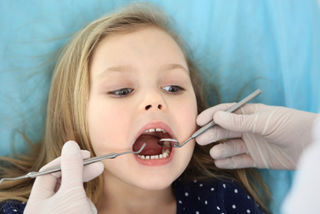Fear
Why Young Children Fear Visiting the Dentist and How to Help
Making preschoolers comfortable at the dentist.
Posted June 7, 2019

A few three-year-olds were in the dress-up corner pretending to be dentists. One of them had recently been and wanted to act out what had happened to her with her friends. Two of them put on gowns and masks, and one of them took a straw to use as the “tooth-cleaner thing.” After several failed attempts at choosing an appropriate patient since no one volunteered, a stuffed alligator was seated in the dentist’s chair and told to “Open wide!” Gales of laughter rang out when the “dentist boss” dropped the “cleaner thing” in order to have both hands free to pry open the patient’s jaws. Someone warned, “Watch out for the teeth!” The play ended there, but the point was made: visits to the dentist can be a tricky business.
The American Academy of Pediatric Dentistry recommends making your child’s first appointment fewer than six months after the first tooth’s appearance, or around your child’s first birthday. Attending to dental health going early and often may delay painful later visits to treat cavities or tooth decay considerably, leaving them down the developmental road when they can be managed more easily. That fear of pain is the most likely reason children fear going. How do they learn that visits to dentists are painful if they’ve never been? They probably overhear groaning from older siblings or parents about going to the dentist to get a problem fixed. How can parents minimize the negatives and maximize the positives of a young child’s early dental encounters?
First, choose a child-friendly practice. They are obvious from the furniture, decorations and toys in the waiting room. The welcoming attitude of a receptionist who is more intent on making your children comfortable than on double-checking your insurance coverage is valuable. Child-friendly dentists and hygienists look and speak directly to young children instead of through their parents. They know that children are capable of connecting directly with them about growing strong and healthy teeth, keeping that great smile and counting how many teeth they have on top and bottom.
Parents can do many other things to make early dental visits go more smoothly.
- Let your children see you brush and floss occasionally, and explain that it makes your mouth feel and smell better and fresher.
- Do a brief meet-and-greet before the first examination, and keep the tone informal. If you are anxious about how your child will do, your child will feel it and wonder why you are worried. Breathe.
- Read a book about visiting the dentist together. I like the tone and simplicity of Just Going to the Dentist by Mercer Mayer and Dora the Explorer’s Show Me Your Smile: A Visit to the Dentist by Christine Ricci and Robert Roper.
- If your child tends to be anxious, try some lighthearted role-play before the first visit. Use props such as a covering gown, a chair and a bright light to shine while looking in your child’s mouth. Count your child’s teeth, then practice the all-important “Open wide!” This beats bribery, which sends the paradoxical message that the visit is likely to be so unpleasant that misbehavior is likely and compensation is necessary;
- Be careful with your messages. Carina Wohl, DMD, our children’s terrific dentist, said what concerns her are “parents who over-prepare with too much talk about what to expect.” Using phrases like “need to sit still,” “hurt a little” and “nice dentist” all raise more questions in a child’s mind than answers.
- Try not to do the visit for your child. Support your child by letting him or her sit in your lap or bringing a favorite stuffed animal or doll that might get the open-wide treatment.


